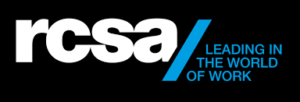
How Important Is It to Craft a Recruitment Panel?
Does It Really Matter?
The recruitment of school leaders is one of the most significant responsibilities for any educational organisation. The process is more than filling a vacancy; it’s about shaping the future of the school and its community. But does the composition of the recruitment panel—the group tasked with selecting the right leader—really make a difference?
The answer lies in understanding the impact of having the right people on the panel. A well-designed panel not only ensures fairness but also enables an informed decision that aligns with the school’s unique context, values, and goals. Let’s explore why this matters by looking at key considerations and practices supported by expert insights and public perspectives broadly in Australia and beyond.
Why Panel Composition Is a Critical Component
The recruitment panel plays a pivotal role in leadership appointments, and its composition has a direct impact on the outcomes. Public sentiment and expert opinion agree: diversity of thought, clear roles, and representation are critical to the panel’s success.
A strong recruitment panel brings together individuals with complementary skills and perspectives, ensuring the evaluation process considers all facets of leadership—from professional competence to alignment with the school’s community and culture.
Source: BoardEffect Blog – Recruiting Board Members
Key Elements of an Effective Recruitment Panel
To capture a broad perspective on what makes an effective panel, we drew on public views and expert commentary. Here are the essential elements:
1. Expertise Beyond the Board
A recruitment panel isn’t complete without voices beyond the school board. The inclusion of external experts—such as educational leaders or governance specialists—provides fresh perspectives and specialised knowledge. This approach ensures the panel remains objective and can critically evaluate candidates for complex leadership roles.
At Aspire2, we’ve seen how the inclusion of external educational leadership experts can elevate the process, ensuring decisions are informed by best practices and tailored to the unique needs of schools.
Source: Public Charter School Best Practices
2. Representing the School Community
The importance of community representation is a recurring theme in public discussions. Including individuals who understand the school’s culture, values, and community ensures that leadership decisions are grounded in the context of the families and students the school serves. This approach strengthens trust and fosters alignment between leadership and the community.
Source: BoardSource – Best Practices in Recruitment
3. Clear Responsibilities for Panel Members
An organised panel begins with defined roles for each member. Public opinion underscores the need for clarity to avoid duplication and ensure each aspect of leadership—such as strategic vision, operational expertise, and community fit—is assessed thoroughly.
Source: BoardEffect – Steps for Better Board Recruitment
4. Transparent and Inclusive Processes
Transparency in the panel’s decision-making builds trust within the school and broader community. Public trust increases when the recruitment process is seen as inclusive and impartial, with clearly communicated steps and criteria.
Source: PANO – Best Practices in Board Recruitment
To read the full story, visit LinkedIn.

Tara Staritski
CEO & Founder



